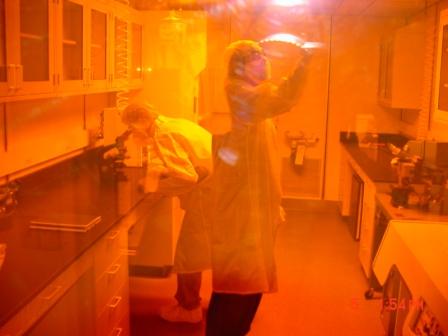
The mass, charge, and spin of electrons in the solid state laid the foundation of the information technology that we use today.Integrated circuits (ICs) and high-frequency devices made of semiconductors (Si and GaAs), needed for information processing and communication, have had great success using the charge of the electrons in semiconductors. Mass storage information - indispensable for the information technology - is carried out by magnetic recording using spin of the electrons in ferromagnetic materials. It is then quite natural to ask if both charge and spin of electrons can be used to further enhance the performance of devices - i.e., mass storage and processing the information at the same time. Magnetoelectronics is a new rapidly developing field, where the two degrees of freedom, the charge and the spin of the carriers, are utilized simultaneously to create new functionalities.
Alternatively, one may be able to inject spin-polarized current into semiconductors to control the spin state of the carriers, which may allow us to carry out qubit (quantum bit) operations required for quantum computing. However, there are many good reasons why this has not yet been realized - Si and GaAs used in devices and ICs do not contain magnetic ions and their magnetic g-factors are generally rather small. On the other hand, from the physical points of view, the enhanced spin-related phenomena due to the coexistence of the magnetism and semiconductor properties have been recognized in magnetic semiconductors and II-VI based diluted magnetic semiconductors (DMS) e.g., CdMnTe, ZnCoS, HgFeSe. In present day electronics, the area of great interest with significant challenge has been to make nonmagnetic III-V semiconductors magnetic, and/or even ferromagnetic, by introducing a high concentration of magnetic (Mn) ions. The major obstacle in making III-V semiconductors magnetic has been the low solubility of Mn (~1018 cm-3 or less) ions. However, the recent efforts to grow new III-V-based DMS on semi-insulating GaAs by using low temperature non-equilibrium molecular beam epitaxy (MBE) have been very successful. Moreover, the GaAs/GaMnAs heterostructure based on GaAs can be a convenient test bench for the new physics and device concepts.